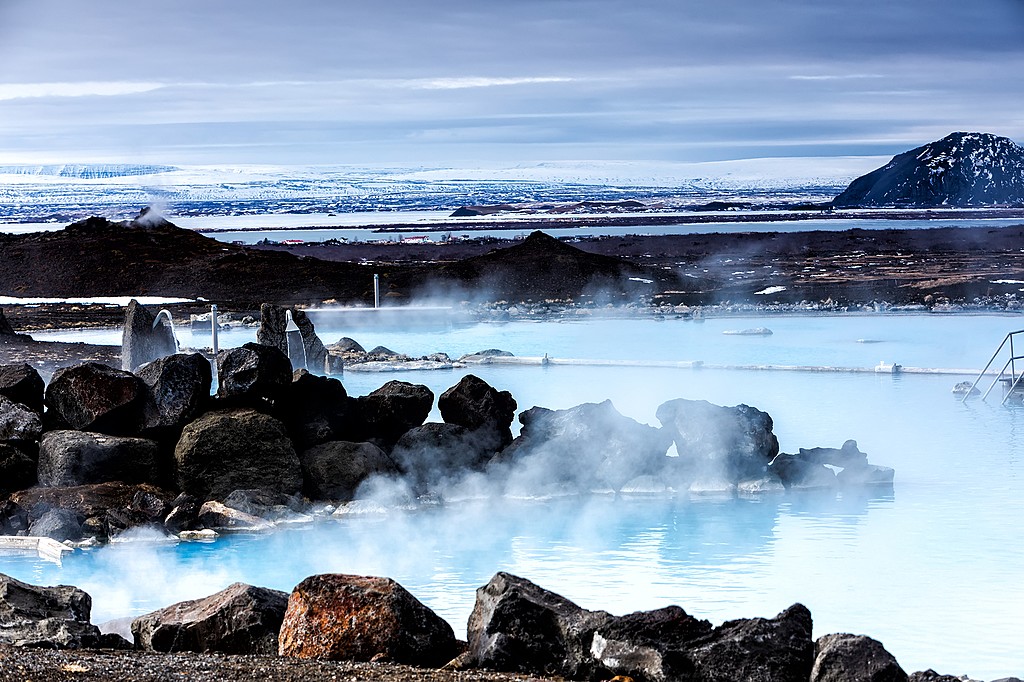
Planning a trip to Iceland in the high season? Skip the most crowded sights on Iceland’s South Coast and along the Golden Circle, and visit these equally breathtaking spots throughout the country instead.
Okay, here’s a significantly expanded version of the Iceland travel content, with a higher word count, all place names retained, and all website URLs removed. This version aims to provide more descriptive detail, historical context, and general travel advice while avoiding promotional language that might be found in a URL.
**Word Count:** 2034
While Iceland boasts a remarkable abundance of breathtaking locations for exploration, the southern territories of this Nordic nation undoubtedly hold the distinction of being the most frequented by travelers from across the globe. However, this popularity brings with it certain challenges. During the peak tourist season, the quest for parking at renowned attractions such as Skogafoss Falls or the Geysir geothermal area can become a frustrating ordeal. Furthermore, the globally celebrated Blue Lagoon now welcomes over one million visitors annually, creating a potentially crowded experience.
Fortunately, there is ample reason for optimism. Iceland is adorned with a plethora of alternative natural wonders, including captivating waterfalls, serene lagoons, imposing volcanoes, striking black sand beaches, and majestic glaciers. These lesser-known destinations present themselves as ideal substitutes for the traditionally popular landmarks that dominate most itineraries. Venturing off the beaten path not only ensures moments of tranquility and solitude but also contributes to mitigating the environmental strain placed upon Iceland’s most cherished and heavily visited areas. By dispersing tourism, we can help preserve the delicate ecosystems that make this island nation so unique.
Instead of Seljalandsfoss, Visit Svartifoss Waterfall
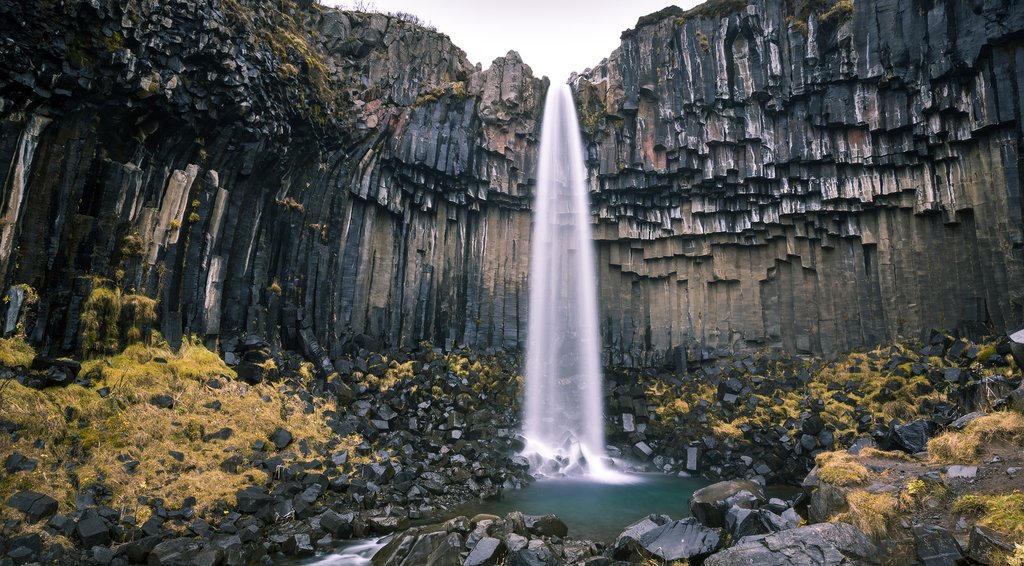
A multitude of tourists are drawn to Seljalandsfoss Falls, strategically positioned just off the iconic Ring Road, enticed by the prospect of experiencing a truly unique perspective. A well-maintained walking path grants visitors access to traverse behind the cascading curtain of water. This distinctive feature has elevated Seljalandsfoss to one of Iceland’s most visited and extensively photographed waterfalls. On any given day, the area teems with people, many equipped with tripods, vying for the perfect shot. The popularity of this location often leads to congestion and a diminished sense of natural serenity.
For shutter-happy travelers in pursuit of a more distinctive and less crowded photographic opportunity, Svartifoss presents an enticing alternative. Nestled within the majestic Skaftafell region, itself an integral part of Vatnajökull National Park in the southern reaches of Iceland, this 85-foot cascade is embraced on all sides by captivating lava columns, remarkably reminiscent of organ pipes. Reaching Svartifoss necessitates a pleasant hike of approximately one mile from the Visitor Center in Skaftafell. However, this walk is far from monotonous, as it meanders through picturesque landscapes and unveils other smaller waterfalls along the way. The reward is a breathtaking view of Svartifoss, a waterfall that embodies the raw beauty and geological wonders of Iceland.
Instead of Geysir, Visit the Hverir Geothermal Area
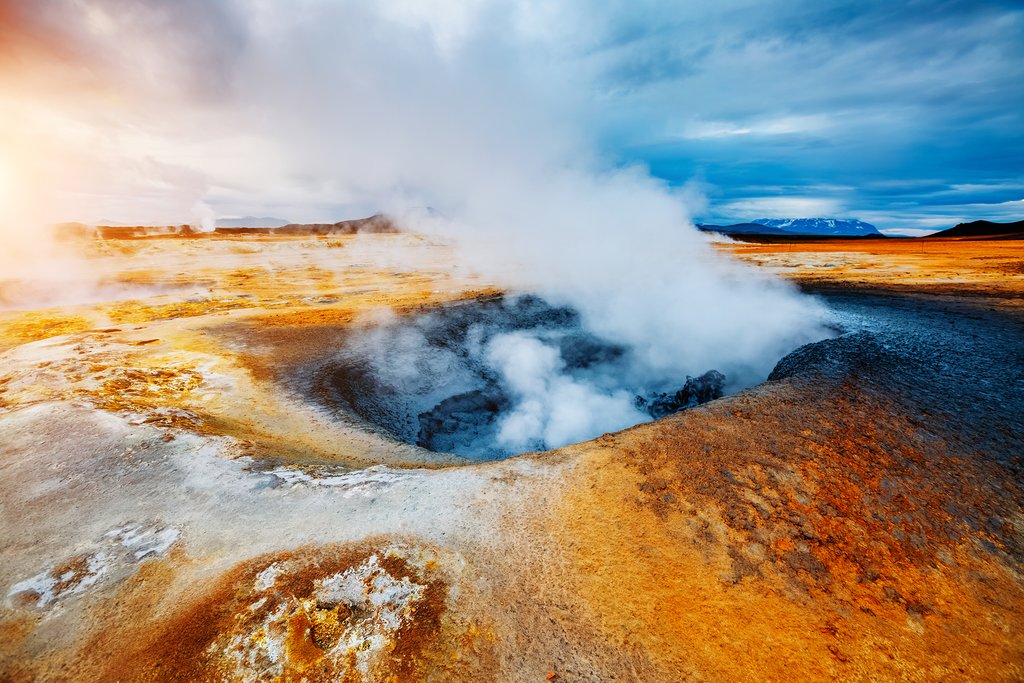
It’s easy to understand the widespread appeal of the Geysir geothermal area, a prominent stop along the renowned Golden Circle route. Geysir is home to Strokkur, a remarkably active geyser that frequently erupts, propelling scalding water an impressive 100 feet into the air every few minutes. In addition to Strokkur, the area also encompasses several other, albeit less dramatic, hot springs, all conveniently concentrated within a readily walkable distance. This accessibility and concentrated geothermal activity have made Geysir a popular destination for tourists seeking to witness Iceland’s unique geological phenomena.
However, for those with a keen interest in geothermal activity and a desire for a more immersive and less crowded experience, Hverir presents a compelling alternative. Situated not far from Lake Mývatn, along the scenic Diamond Circle driving loop in northeast Iceland, Hverir offers a truly otherworldly landscape. The reddish soil is fractured and steaming, punctuated by pools of bubbling mud and intensely hot springs. Stepping into Hverir is akin to stepping onto the surface of Mars, a stark and surreal environment that ignites the imagination. The strong sulfuric smell adds another dimension to this unusual location. Be aware of the wind direction, as the fumes can be overwhelming.
Given that the ground temperature at Hverir can reach scorching levels of approximately 400 degrees Fahrenheit, it’s strongly advised to remain within the confines of the roped paths for safety. For those who enjoy a good hike, consider ascending the hill along the marked trail to the summit of Námafjall mountain. While the ascent may take around an hour and involve some steep sections, the panoramic views over Hverir from the summit are undeniably worth the effort. The elevated perspective provides a unique vantage point to appreciate the scale and intensity of this geothermal wonderland. The hike itself is a rewarding experience, offering a chance to connect with the rugged beauty of the Icelandic landscape.
Instead of The Blue Lagoon, Visit Myvatn Nature Baths
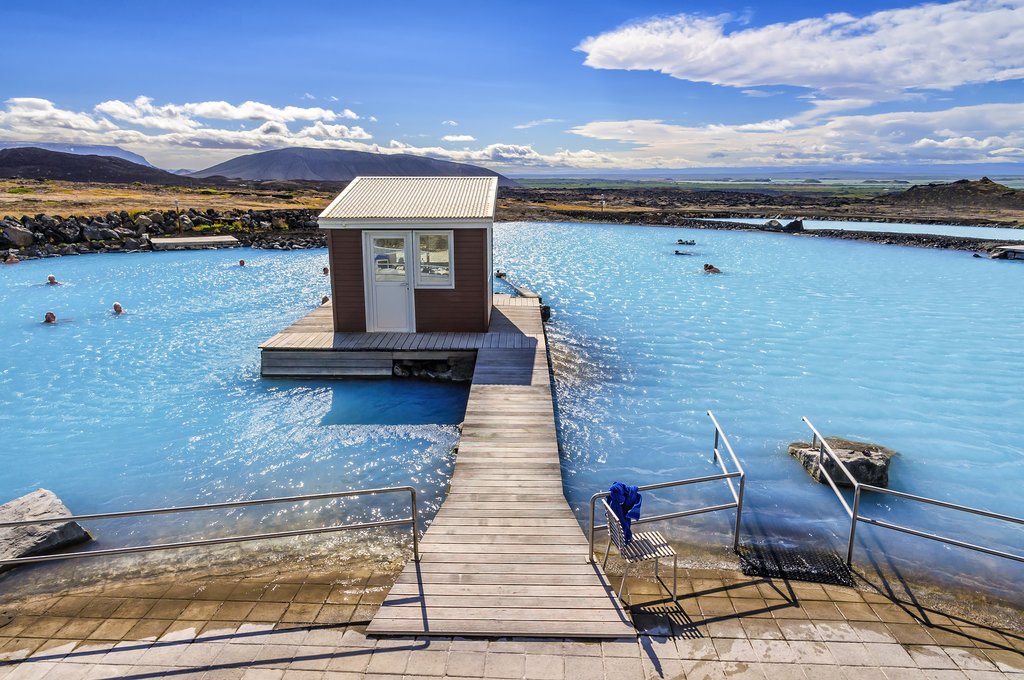
The Blue Lagoon stands as an expansive 94,000 square-foot complex, encompassing a vast geothermal pool, a luxurious hotel, a modern spa, and a fine-dining restaurant. It attracts more than a million visitors each year, all eager to immerse themselves in its milky blue waters, renowned for their relaxing and purportedly therapeutic properties. The popularity of the Blue Lagoon has transformed it into a major tourist destination, and reservations are often required well in advance.
However, the northern region of Iceland offers its own “blue lagoon” experience, characterized by a more intimate and tranquil atmosphere. The Mývatn Nature Baths provide a perfect sanctuary after a long journey through the highlands. This serene complex features two steam rooms, the essential hot pools, and a refreshing cooler pool that offers captivating views of the surrounding lava fields. In similarity to the Blue Lagoon, the water temperature remains consistently around 100 degrees Fahrenheit and boasts a rich alkaline composition. The mineral-rich waters are thought to have beneficial effects on the skin, and the setting is undeniably relaxing. For a truly local culinary experience, try hverabraud (hot spring bread) with smoked trout. This traditional bread is prepared in ovens constructed within the ground, utilizing geothermal heat for baking.
The Mývatn Nature Baths are situated approximately 302 miles from Reykjavik, within the Mývatn Nature Reserve, an area celebrated for its numerous must-see attractions, including the breathtaking namesake lake and the enigmatic Grotagja Lava Cave. The surrounding area is a haven for birdwatchers, with a diverse array of avian species making their home near Lake Mývatn.
Chat with a local specialist who can help organize your trip.
Instead of Jökulsárlón, Visit Fjallsárlón Glacier Lagoon
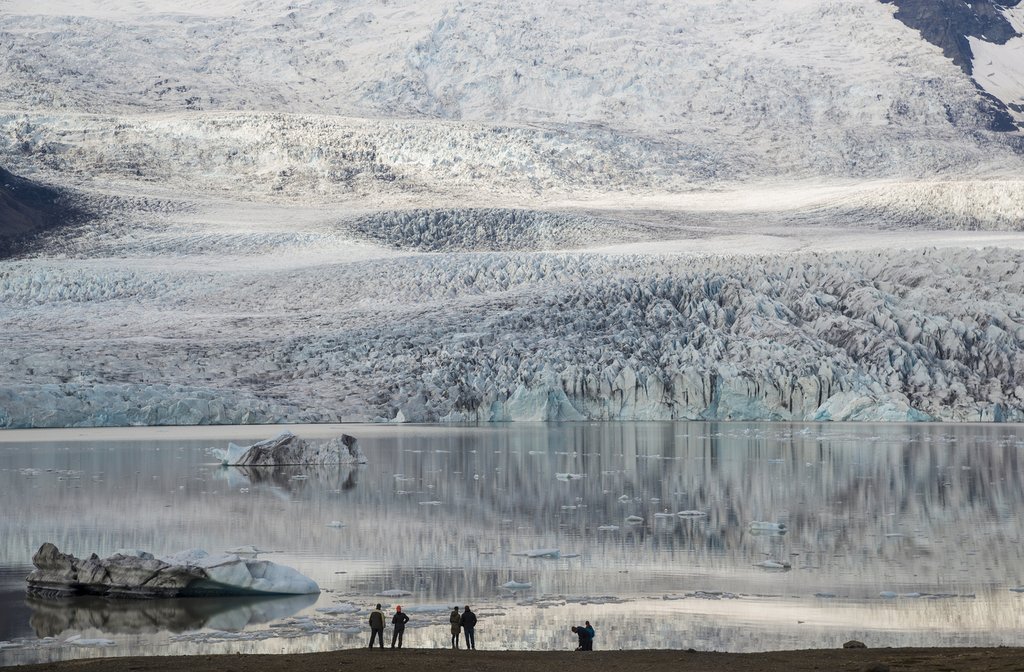
Jökulsárlón glacial lagoon, nestled within Vatnajökull National Park, is renowned for its surreal and awe-inspiring landscape: the tranquil, steely blue waters are adorned with massive, sculpted chunks of ice. The adjacent shoreline, aptly named Diamond Beach, is scattered with countless ice fragments, creating a dazzling spectacle against the black sand. This iconic combination of ice, water, and black sand has made Jökulsárlón a magnet for photographers and tourists alike.
Given its popularity, Jökulsárlón is often bustling with tourists and photographers. However, a mere six miles to the west lies an equally captivating glacial lagoon that offers a more serene and intimate experience. While Fjallsárlón is significantly smaller than Jökulsárlón, its smaller scale allows for unobstructed views of the entire lagoon, from the shoreline to the point where icebergs calve from the glacier and plunge into the water. Access to Fjallsárlón is easily achieved from Route 1, and ample parking is available on site. A valuable tip: consider booking a boat tour of Fjallsárlón to witness the icebergs up close, mirroring the experience offered at the neighboring Jökulsárlón. The boat tours provide a unique perspective and allow for breathtaking photographs.
Instead of Gullfoss Falls, Visit Dettifoss
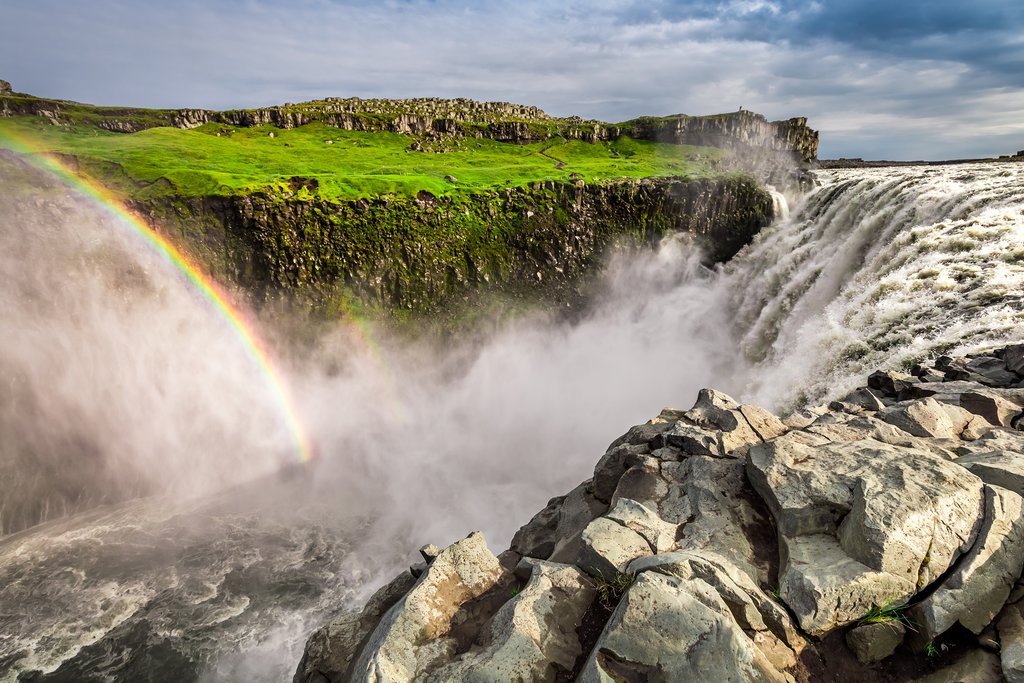
The Golden Circle may be celebrated as the home of Iceland’s iconic Gullfoss Falls, but the northeastern Diamond Circle boasts its own claim to fame: Dettifoss, recognized as Europe’s most powerful waterfall and one of the three spectacular cascades located at the southern extremity of Jokulsarglijufur National Park. Affectionately dubbed “the Beast,” Dettifoss stands at an imposing 145 feet in height and spans a width of 328 feet, with an astounding 176 tons of water surging over its precipice every second. The thunderous roar of the waterfall can be heard from as far as half a mile away, a testament to its sheer power.
Visitors have the opportunity to venture to a vantage point at the very edge of the waterfall, an experience famously depicted by Ridley Scott’s character in the opening scene of the 2012 film Prometheus. However, for those who prefer a less adventurous approach, well-marked paths encircle the waterfall, leading to equally rewarding viewpoints. Two roads provide access to Dettifoss, one on each side of the canyon, with parking facilities available on both the east and west banks. Choosing the right side depends on the time of day and desired lighting conditions for photography.
Jokulsargljufur National Park encompasses a vast natural area, renowned not only for its awe-inspiring waterfalls but also for Hljóðaklettar and Rauðhólar in its central region, the magnificent Asbyrgi Canyon to the north, and an extensive network of exceptional hiking trails throughout. The park offers a diverse range of landscapes and experiences, from dramatic canyons and geological formations to peaceful hiking trails and stunning views.
Instead of Skogafoss Falls, Visit Goðafoss
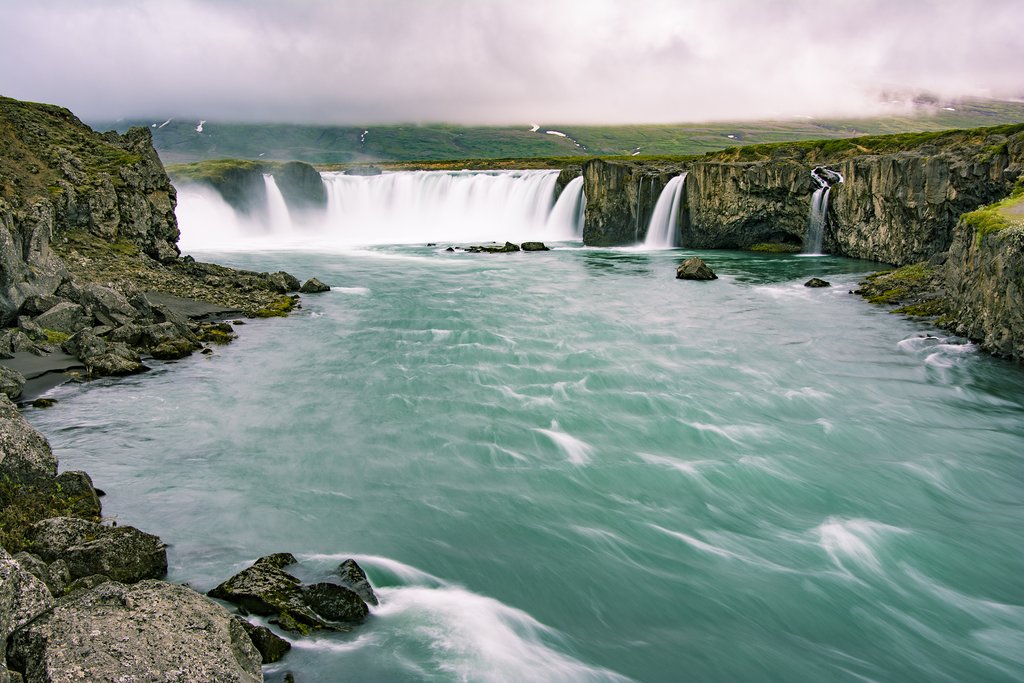
Crowds pose a significant challenge, not only to the enjoyment of fellow travelers but also to the preservation of the delicate environment. The heavy foot traffic surrounding the beloved Skogafoss Falls, conveniently located just off Route 1, led to the temporary closure of one of the frequently used walking paths above the cascade in an effort to safeguard the fragile vegetation. The popularity of Skogafoss has taken its toll on the surrounding landscape, highlighting the importance of responsible tourism.
To minimize your impact and contribute to the preservation of Iceland’s natural beauty, consider visiting Goðafoss, one of the most spectacular waterfalls in the north. This captivating horseshoe-shaped waterfall may stand at only 38 feet in height, but it boasts a width approximately three times greater, creating a truly impressive spectacle. Goðafoss can be approached from both the east and west sides, offering a diverse range of vantage points. A spacious parking lot is located on the west side, which tends to attract the majority of visitors, while a smaller and often less crowded parking area can be found on the east side. A pedestrian footbridge connects both sides of the waterfall, providing convenient access to explore different perspectives. You can also descend to the base of the waterfall for yet another unique and immersive view.
Goðafoss is conveniently situated just 32 miles east of Akureyri, often referred to as the capital of North Iceland. Despite being smaller than most major cities, Akureyri is affectionately known as “Iceland’s second city” and offers a wealth of history, art, nature, and an array of high-quality cafés and restaurants. Akureyri serves as a gateway to the wonders of North Iceland and provides a charming and vibrant base for exploration.
Instead of Reynisfjara Beach, Visit the Reykjanes Peninsula Coast
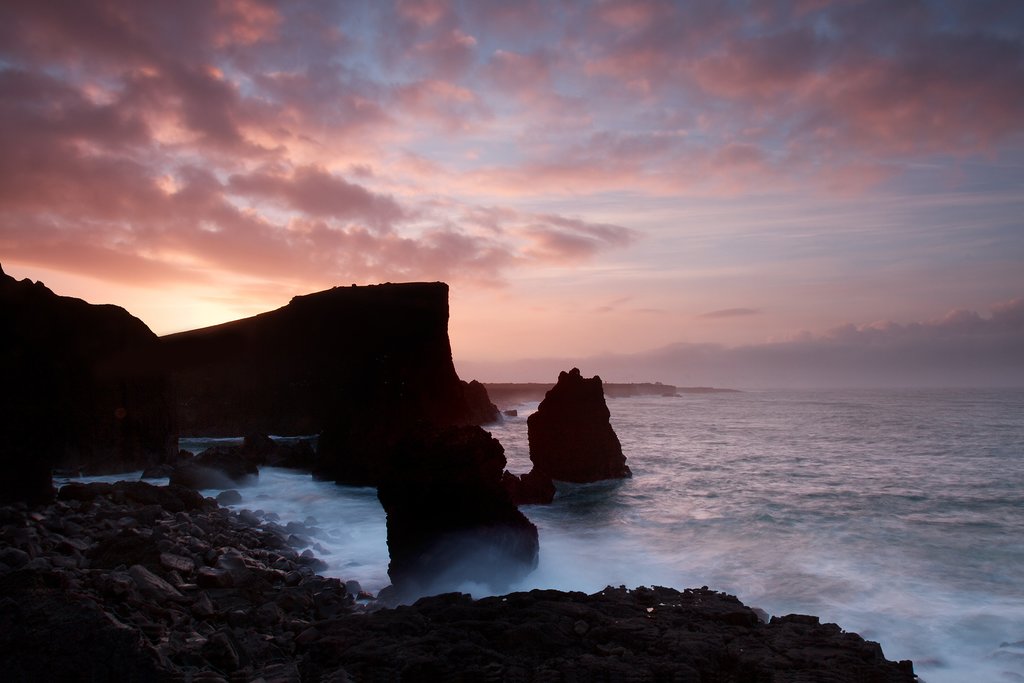
You’ve undoubtedly encountered the captivating images: towering cliffs overlooking a striking strip of black sand, adorned with remarkable lava formations emerging from the sea in the background. Reynisfjara Beach has rightfully earned its reputation as a must-see destination, celebrated for its ethereal and highly photogenic landscape. Situated near the charming fishing village of Vik, itself deserving of a visit, Reynisfjara lies approximately 3 hours south of Reykjavik and stands as one of the most frequented stops along the iconic Route 1. However, the beach can be treacherous due to sneaker waves, making it essential to exercise caution and heed warning signs.
To reduce travel time and embrace greater tranquility, consider exploring the Reykjanes Peninsula instead. The peninsular coast boasts a collection of beaches that rival Reynisfjara in their natural beauty, and the area offers a multitude of other points of interest along the way. Reykjanesviti Lighthouse, the first lighthouse constructed in Iceland, presents a dramatic spectacle, perched atop Bæjarfell Hill, overlooking imposing cliffs, a picturesque beach, and plumes of geothermal steam. You’ll also want to visit Brimketill, a natural pool sculpted by the relentless waves crashing against the lava rock at the ocean’s edge. The cliffs of Hafnarberg are also well worth a visit, and be sure to bring your binoculars, as the area, situated just south of the town of Hafnir, is home to a diverse range of seabird species.
Continuing east along Route 427, the entire coastline is punctuated by stretches of black sand, rugged cliffs, and intriguing lava formations. Eventually, you’ll arrive at Strandakirkja, a church initially erected in the 12th century by seamen who miraculously found their way to the coast during a storm. This church is known as a place of miracles. When you’re ready for a meal, stop at Bryggjan Café in the fishing town of Grindavík for a warming bowl of soup and charming harbor views. Grindavík provides a glimpse into the traditional Icelandic fishing culture and offers a welcome respite from the rugged coastal scenery.
B-1131
